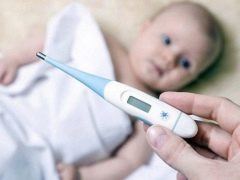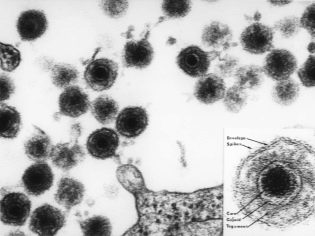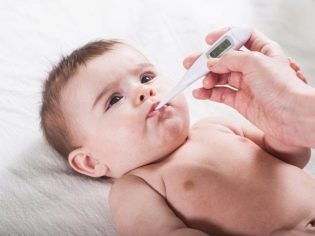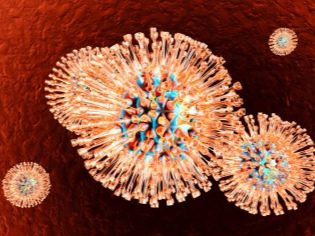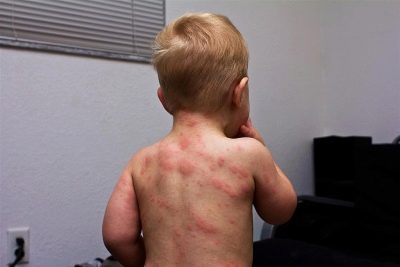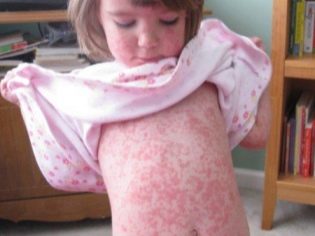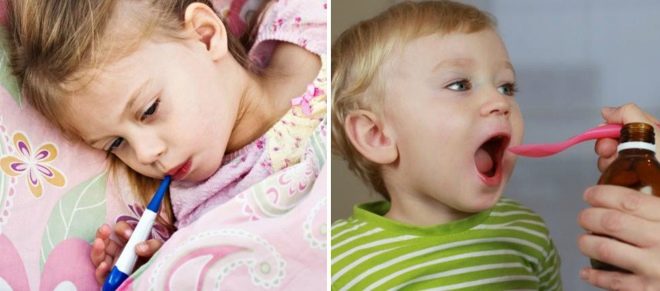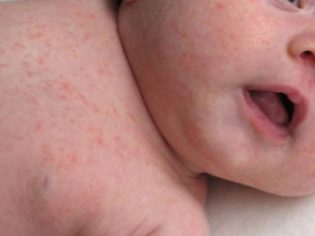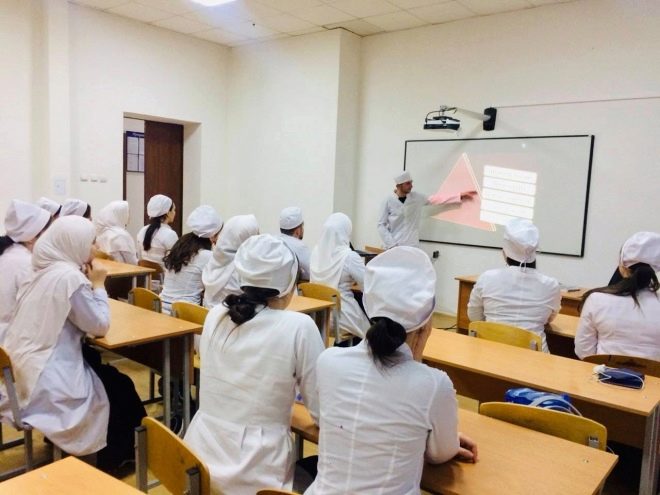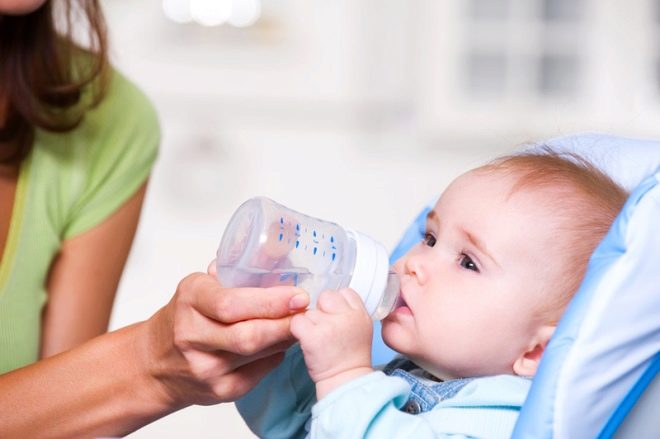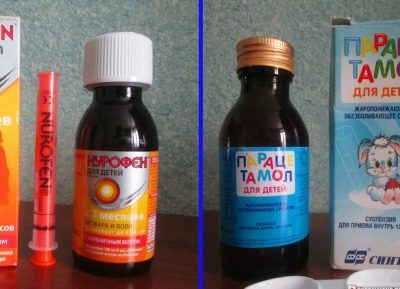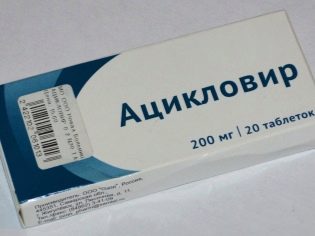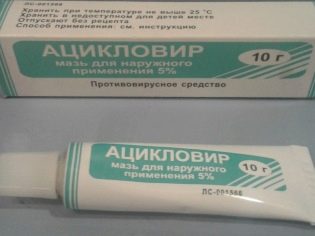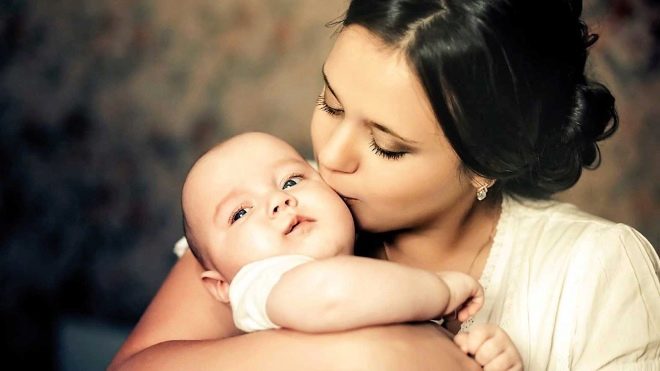Roseola symptoms in children and treatment guidelines
There are diseases in the world that hurt almost everyone - for example, chickenpox. Such diseases are usually called children's for wide spread in childhood. Roseola is also a typical childish one - a mysterious ailment in all respects.
What it is?
Roseola, for children, it’s a roseola, sudden, sudden rash, pseudorasnuha, three-day fever and the sixth disease - all these are numerous names for the same independent infectious disease. Certain virus causes illness - herpes virus type 6. The five well-known viruses of the herpesvirus family are well known to medicine, which cause characteristic rashes on the lips (first type), genitals (second type), chickenpox (third type), infectious mononucleosis and chronic fatigue syndrome (fourth type) and cytomegaly (fifth type).
With regard to the sixth, seventh and eighth herpes viruses, science is not as much known as we would like, but it has already been established that it is the herpes virus of the sixth type that becomes the cause of pediatric roseola. For the numbering of the pathogen in the classification system for herpes viruses, the disease is called the “sixth disease”, and for its characteristic clinical signs, roseola is often called the “three-day fever”.
Any person, regardless of gender, age, race or nationality, can infect a virus. But for some reason, he prefers children, and at a certain age - from six months to two years. Older children suffer from this infection, but up to 95% of all cases of sudden exanthema occur in early childhood.
At the age of one year, up to 45% of children are ill with roseola, after a year, at the age of up to two years - up to 75% of tots. Up to 80% of children suffer illness by 4 years, and in almost every adolescent and adult (up to 93% of the population) antibodies to the “sixth” virus are detected in the blood at any age throughout their lives.
Speaking of nursery roseolus, it should not be confused with roseola in the dermatological sense of the term.. In the first case, we are talking about a viral infectious disease, in the second - this is only a certain type of skin rash, which happens with a variety of dermatological diseases. They have only one thing in common: a rash on the skin has a certain size - no more than five mm in diameter, it looks like pink spots with a small protrusion above the skin.
Pediatric roseola most often appears in a certain season - in spring and autumn. They are sick of it only once in a lifetime, like chickenpox. After the disease produces a persistent lifelong immunity to the pathogen.
How is it transmitted?
Like all members of the herpesvirus family, VG-6, which causes roseola to the nursery, happens once and for all. The virus, entering the human body, remains in it for life. While the child’s immunity is strong enough, the virus slumbers, does not denote its presence, but if the body’s natural defense is weakened due to illness, beriberi, after surgery, and the herpirus “wakes up”.
VG-6 has its own double-stranded DNA, and the favorite habitat of the virus is the cells of the immune system. Due to the fact that the virus does not destroy the cell to the end, but rather builds its own DNA into it, it exists in symbiosis with the organism of its carrier for years and decades.
The virus of the sixth type has two varieties - VG-6A and VG-6B.The first type prefers to integrate into the cells of the nervous system and usually leads to some autoimmune diseases, although the direct link has not yet been proven. Rozeolu nursery causes VG-6V. Recent studies have shown that the seventh type of herpes virus can be the causative agent of a sudden infant exanthema. But this happens only in 7% of cases.
This virus is most often spread by airborne droplets. Contact method of transfer is not excluded.. The virus is very contagious, highly contagious, spreads rapidly. Scientists suggest that infection comes from adults who are carriers of VG-6 throughout life, but the exact mechanism of infection is still the subject of scientific research by specialists.
The incubation period of infection is from 5 to 15 days. During this time, the virus caught on the mucous membranes of the nasopharynx, the larynx of the child multiplies, and this process is not accompanied by any manifestations - the child behaves as usual.
When viral particles begin to enter the blood through thin capillaries, the child quickly and suddenly rises high temperature. This is the first sign of the disease.
Signs of
A children's sudden rash develops strictly at certain stages, and this is its main difference from any other viral infection. However, on the first day, when the child has a high temperature (up to 40.0 degrees) after the end of the incubation period, there are no differences from ORVI. To understand that the baby has exactly roseola, at this stage it is necessary to do a serological blood test or PCR analysis, which will show a high acute immunity to the virus.
Usually, temperature is all and limited. There is no sore throat, no cough, no rhinitis. The child does not have diarrhea, constipation, abdominal distention and vomiting. Quite rarely does the throat redden, the eyelids swell slightly. The temperature is difficult to reduce, quickly rises again. The child is experiencing intoxication in the background of such heat. He becomes sluggish, loses his appetite, drowsiness increases, the baby is naughty. BUT in three days the temperature passes exactly as suddenly as it appeared.
And as soon as the parents breathe out with relief, believing that the disease has receded, the second stage of the disease starts, in which the baby’s body becomes covered with a rash-like roseola rash. The rash appears usually within 10-20 hours after the body temperature becomes normal..
The nature of the rash is quite bright - it is small, pinpoint, its individual elements do not merge with each other.. Each element is bright, pink, slightly protruding above the skin without purulent, watery, or other “heads” on each element. The rash covers the abdomen, legs, arms, back of the baby, can be observed on the head, on the face, neck. It does not peel off, does not itch, does not give the crumbs any inconvenience. If you press on the rash with your finger, it brightens for a few seconds, but then it turns bright pink again.
In addition to the rash, parents can detect slightly enlarged lymph nodes. They are not inflamed, their palpation does not hurt the child. To the touch knots hard, dense.
It is necessary to understand that a child is infectious for other children and adults who did not have herpes virus of the sixth type (if any) before, only with a rise in temperature. When a rash appears on the skin, that is, in the second stage of the disease, the child is not contagious, he can safely contact with anyone.
Skin rash lasts up to five days. Then they gradually begin to lighten, turn pale, and after about a week pass completely. Where there were elements of a rash, there are no scars, no stains, or peeling. Sometimes there may be brighter specks that are different from the general cutaneous tone, but they disappear on their own within a few weeks.
Can there be complications?
In most cases, the herpetic infection of the sixth and seventh type does not cause any complications either in children or in adults.But this is true only for those who have a normal immune status. If the child has a diagnosed HIV infection, if there are other congenital or acquired immune and autoimmune diseases, if the child has recently undergone organ transplantation, then complications are likely, but not necessary. In this case, the likelihood of meningitis and meningoencephalitis increases.
In a normal healthy child, the only type of complications in case of roseole may be the consequences of improper care in the first period of infection, that is, in high heat. High temperature quickly leads to overheating of the body, to its dehydration. The younger the child, the more dangerous for him high fever.
If you respond to temperature correctly, give antipyretic drugs on time, give a child plenty of water, measure the temperature every three hours for control, call an ambulance, if the heat gets out of control, then there will be no negative consequences.
Prevent the occurrence of febrile seizures, as recent studies show, is almost impossible. Therefore parents, even if they are doing everything right, should closely monitor the baby during the entire first period of herpes infectionas long as the temperature is high.
Age features of the disease
Most clearly, the disease occurs in children under one year old. The initial stage is accompanied by high fever. If on average it is considered that the peculiar temperature for pediatric roseola is in the range of 39.7 degrees, then in infants, the disease often manifests itself in temperatures exceeding 40.0-41.0 degrees.
It can be difficult for parents to distinguish roseola from allergies in infants. Knowledge of several distinctive features will help them in this:
a rasheola rash appears strictly after a three-day fever;
it is not associated with changes in diet, the influence of allergens;
rashes do not cause discomfort to the child.
To help distinguish photos with explanations. Compare two snapshots. On the first - an allergic rash. It is prone to fusion, accompanied by local edema around the elements. On the second - roseola for children. Rash separate, not drain, not edematous.
Up to 6 months, roseola rarely happens because the child is protected by innate maternal immunity - a set of antibodies that the mother shared with the baby during the period of its prenatal development. Then the innate immunity weakens, in connection with which, from the six months of age, roseola appears more frequently.
In children older than 3 years, the disease usually proceeds harder than in infants in terms of intoxication on the background of temperature. In addition, the older the child becomes, the more likely the atypical course of the infection becomes. In children older than three years, the temperature can last not three days, but 1-2 days, and in children older than seven years, the disease can be almost asymptomatic - either without fever or without a skin rash.
Why is disease so rarely diagnosed?
It is difficult to find a child or an adult on the globe who has not had a child roseola, but it is equally difficult to find a child who has such an entry in his medical record. Why? The situation with roseola is paradoxical, because pediatricians in practice cannot reveal a sudden rash or a “sixth disease”. This does not mean that they missed the relevant section of the textbook during their studies at a medical university. The reason for the weak diagnosis lies in the features of the disease itself, because the parents cause the doctor at the very beginning of the illness, when the first stage with a high temperature occurs.
The doctor comes, examines, does not detect respiratory problems, and if he does find a red neck, he is even more convinced that the disease is viral, and automatically puts it on the SARS card.Why, you ask, because there is no cold or no cough? And this is the second question to which any pediatrician will answer you that he put in the card not just “ARVI”, but “ARVI with an atypical course”. The conscience of the doctor is clear - and true, high fever is peculiar to viral ailments. Lack of cough is an atypical symptom.
Where Roseola is more accurately diagnosed for children at 4-5 days, when the body of the baby is covered by a characteristic picturesque rash.. But the trouble is that by this time, so many medicines from antiviral drugs to antipyretic and antihistamines have already been stuffed into the child at the pediatrician's request, that referring to the rash to the same doctor is regarded as an allergic reaction to the medicines.
Please note that most pediatricians at this stage do not even assume that the matter here is not at all in allergies. This is because in medical schools, childcare of a nursery is considered only theoretically; in practice, students are not shown roseola. What can be demanded from the pediatrician if he never saw roseola itself!
If this disease posed a certain danger to children, probably, the attitude to it in universities and hospitals would be more serious. But the disease does not carry danger; it does not require specific treatment. Therefore, its failure to reveal is not a crime, since the medical “mistake” in this case will not turn into any dangerous consequences.
Treatment
As you might have guessed, the disease resolves on its own, without the use of any specific treatment. Everything takes about a week, and after that the symptoms no longer return. Therefore, the task of parents at all stages of treatment to create a child the conditions in which the body will recover faster. We need bed rest, plentiful warm drink, lack of stress and the presence of light food that does not require much energy from the child’s body for digestion.
Since the main danger for the baby lies in dehydration during hyperthermia, you need to make him drink a lot. If not drinking - drink by force, from a disposable syringe, directing a stream of fluid along the cheek to spit less. If he doesn’t drink and spit it out all or all, he needs to call an ambulance and hospitalize the baby. In the hospital, in order to avoid the onset of dehydration, the child will be fed through a tube or intravenously injected.
But usually with the task of giving a drink to the child, most parents successfully cope on their own. What can I give? Tea, compote, home-made juice, mineral water without gas, dogrose broth, ordinary clean drinking water.
The main thing is that the liquid was not hot and not cold, better than room temperature, so the liquid is absorbed faster by the body.
To feed the child you need at his request. If there is not asking, do not force it. Breastfeeding for the time of illness is better to eliminate lactation from the diet, leave only breast milk or formula, and after a year children should be given light meals, cereals, vegetable purees, soups, which will not burden the body too much.
The room in which the patient is sick should be aired every hour for 10-15 minutes., even if it's winter. Try not to overheat the room, the optimum air temperature for a sick child with high fever is about 21 degrees Celsius.
Try to save the child from all warm clothes, from warm blankets. Let him lie in panties under a light sheet - so you avoid hyperthermia. The temperature, if it brings the child suffering, can be beaten down by age-resolved antipyretic agents, for example, Paracetamolum. In the absence of the effect of such drugs, you can give your child drugs from the line of anti-inflammatory nonsteroid, for example, "Ibuprofen".
But experts recommend giving them only when the child does not tolerate high fever, in other cases as far as possible it is better to refrain from medicines, because high temperature is needed for a more effective immune response of the body.
Lubricate the rash on the skin, which will appear in three days, there is no need. They do not itch, do not hurt, do not itch, do not cause any unpleasant sensations and the only person who needs treatment for such a rash in infants is his mother, who cannot look at the pink-strewed baby without a shudder. Mom can take valerian.
If the pediatrician prescribes antiviral drugs, even knowing that the child has roseola, specify why. Will the kid drink homeopathic "Anaferon" or not, the disease will last exactly as long as it should last. Other antiviral agents during tests also showed no efficacy against most viruses, including the herpes virus of the sixth type, and therefore it is only parents themselves who can treat them with roseola or not. If you do not want to give the child pills, do not give, nothing will happen. Is that the producers of antiviral drugs with dubious effectiveness are not counted profits.
The only antiviral drug that may have place to be - "Acyclovir", but it is recommended in tablet form for a very severe course of the disease, and in the form of ointments for skin rashes - mainly for parental sedation. Smear rash or not - does not play a big role, it still takes 5-7 days, not earlier.
You can bathe the baby after the fever has subsided, but try not to rub it with a washcloth and make sure that the water is not too hot. You can also walk with the child as soon as the temperature drops. Despite the rash, it is no longer contagious to others.
Prevention
According to parents, they most often learn about pediatric roseola after the child has had it, sometimes the signs of antibodies in the blood (the immune system becomes lifelong) are detected by an immunological examination, and sometimes the mother just reads about the disease and suddenly remembers that something was wrong with them a few years ago. Based on this, prevention issues would be rather strange. She is not. Roseola is almost as inevitable as at least one episode of diarrhea in childhood. Vaccination against herpesvirus does not exist.
Therefore, to treat the disease is recommended philosophically, as something inevitable. Remember, roseola only looks frightening, in fact, a great harm to the child’s body does not cause.
More on Roseola will tell Dr. Komarovsky, in the next video.
